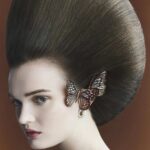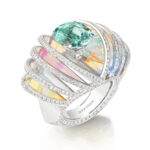
If the jewelry collections in many European national art galleries represent the most extreme concentration of art and aesthetics, then the jewelry collection at the National Gallery of Victoria (NGV) in Melbourne is undoubtedly unique.
In the well-known rivalry between Sydney and Melbourne for the top spot, NGV has single-handedly established Melbourne’s position as the art capital of Australia and the world, boasting the largest scale, highest visitor numbers, and longest history. Today, let’s take a tour of this remarkable place!

From a few small exhibition halls of the Victorian College of the Arts in 1861, NGV has grown into a giant institution now divided into two main branches: the “International Gallery” and the “Australian Gallery”. NGV not only houses historical artifacts from thousands of years ago but also showcases artistic masterpieces that witness the development of our times.
Moreover, it hosts meticulously curated “top-tier” exhibitions in various fields, bringing together global talents.
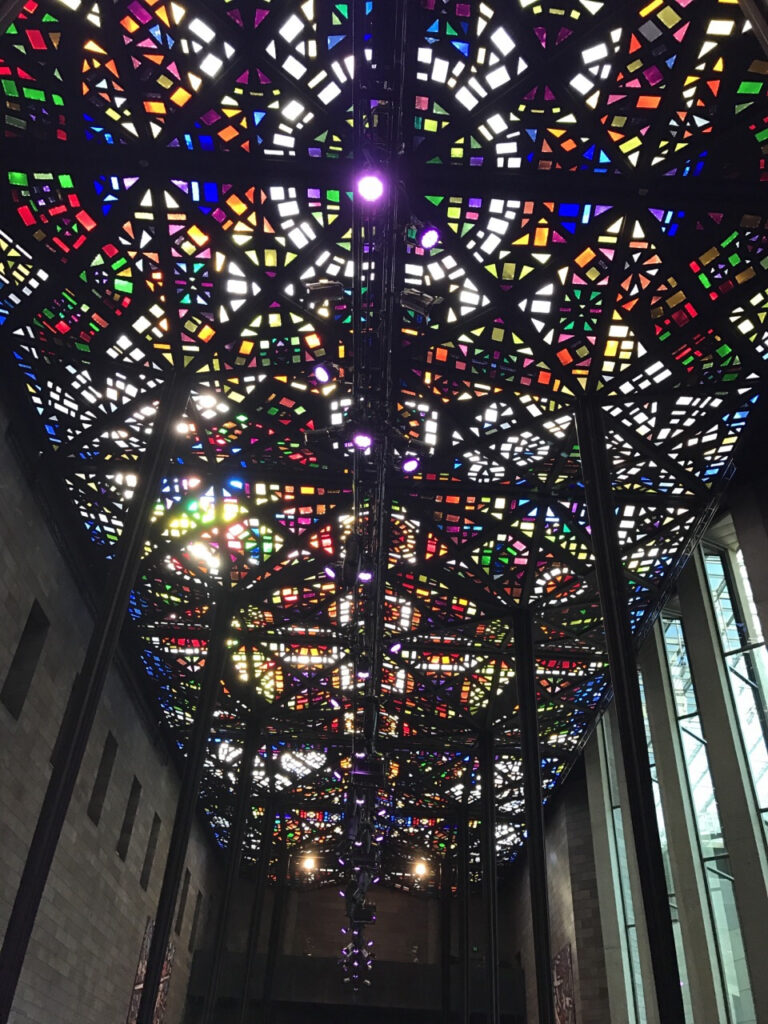
As soon as the pandemic restrictions were lifted between Australian states, people from all over the country flocked to NGV. Visitors were eager to stand under the world’s largest stained glass “ceiling”, designed by Australian artist Leonard French and completed over five years, to take photos with the colorful light spots.
Even more attention-grabbing was the Gabrielle Chanel Fashion Manifesto exhibition, which shook the Australian fashion world. This was the first Chanel-themed exhibition held in Australia, and as soon as it opened, it broke through the gloom of the pandemic, achieving unprecedented success with tickets in high demand.
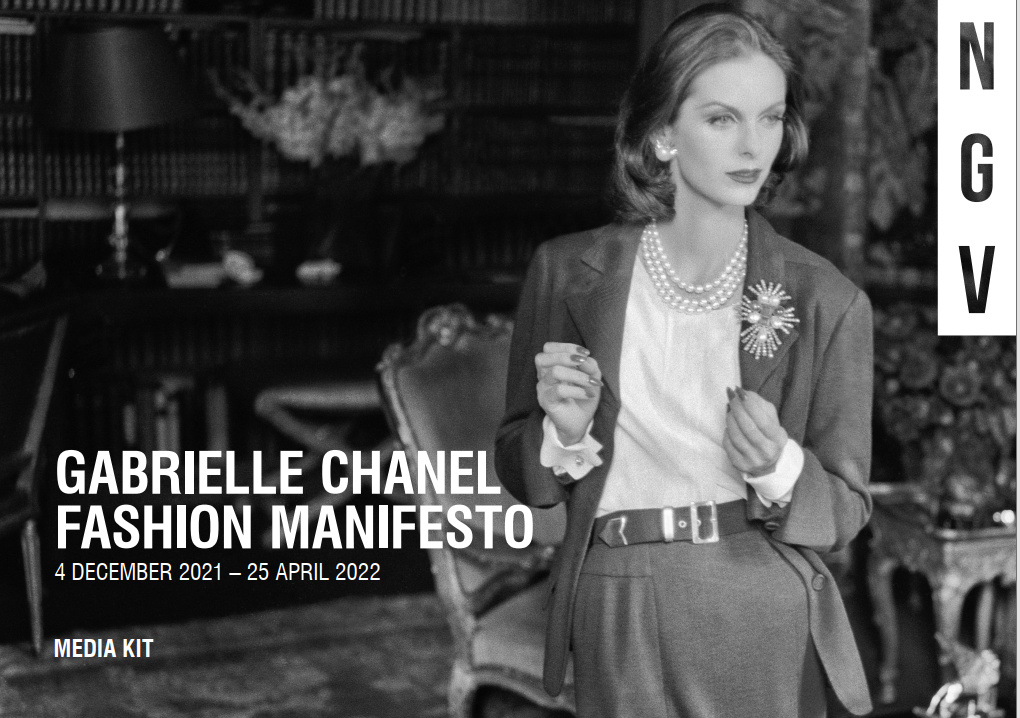
Furthermore, there’s a popular attraction at NGV that not only satisfies the fresh, girlish hearts of summer but also allows visitors to experience the high-level artistic interpretation of nature by Melbourne design team Taylor Knights and artist James Carey.
Did you know that in Victoria, there are many inland salt lakes with pink water, creating a natural wonder? However, due to the mineral composition, tourists can’t actually swim in these lakes. The art installation “Pond[er]” in NGV’s Grollo Equiset Garden, made entirely of harmless materials, brings the “pink lake” to visitors. Guests can “immerse” themselves in it, exploring the space of plants and water up close, creating a truly magical experience.
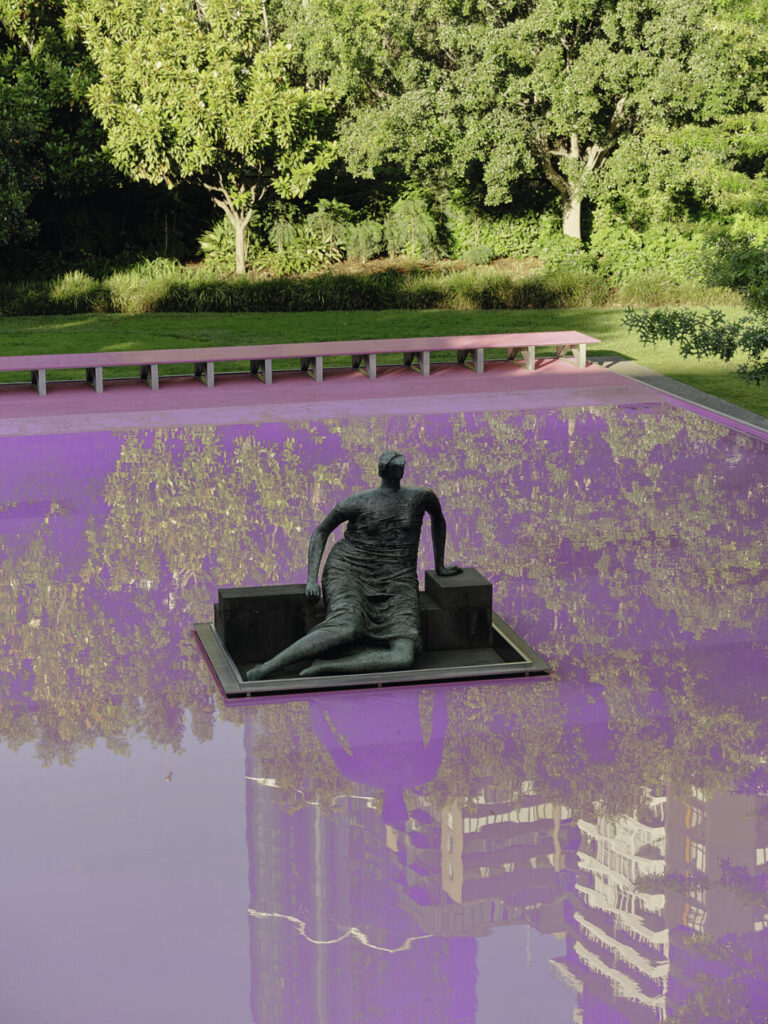
As an island nation, Australia’s unique isolation and wildness have created its unparalleled geopolitical characteristics, making its artists more focused on the environment and the shared destiny of humans and all life forms.
From environmental protection to animal conservation, the materials and themes of NGV’s jewelry collection are closely related to the Earth and the universe. These pieces eschew elaborate decorations and luxurious details, instead maximizing the tension of small jewelry pieces by transferring it to concerns about nature and the environment, amplifying aesthetics into respect, recognition, and reverence for the primitive.
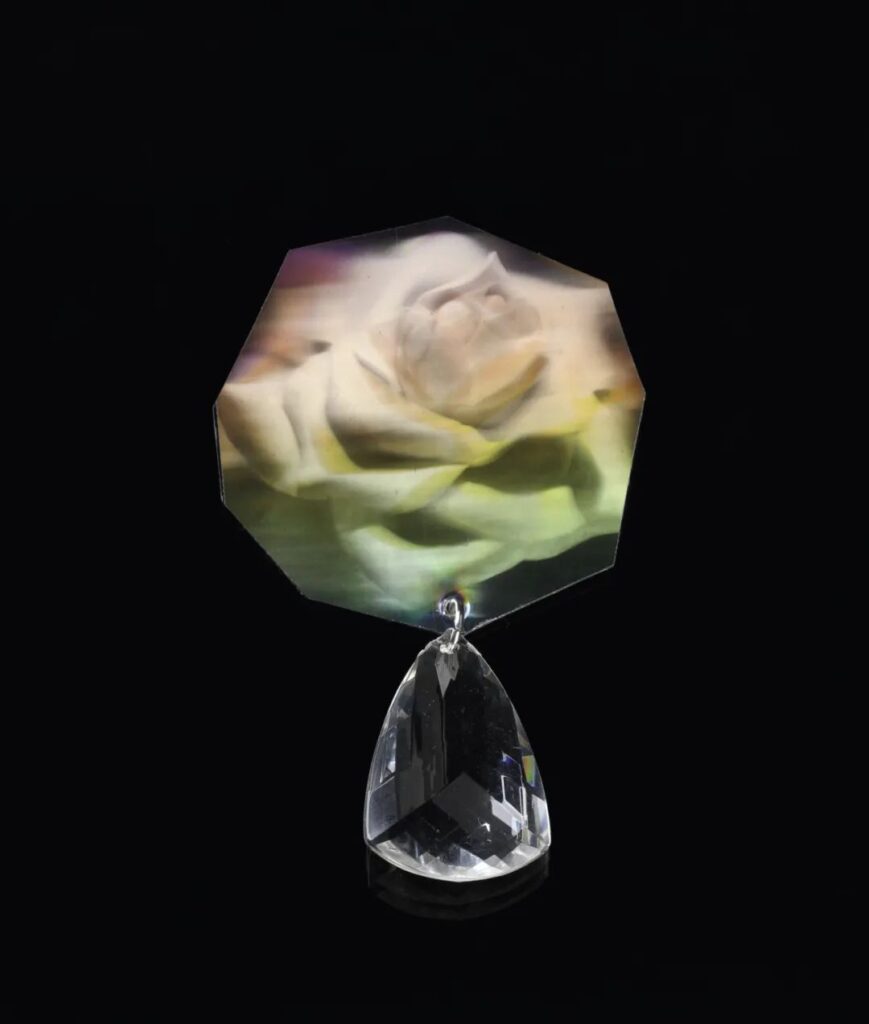
Peter TULLY, 1991
Moreover, jewelry works created by indigenous artists have given NGV a unique highlight in world jewelry art exhibitions. As the world’s oldest continuous culture, traceable to 360,000 years ago, Australian Aboriginal people still retain their languages, paintings, music, diet, lifestyle, and art forms, all of which have become the best materials for their jewelry design and creation.
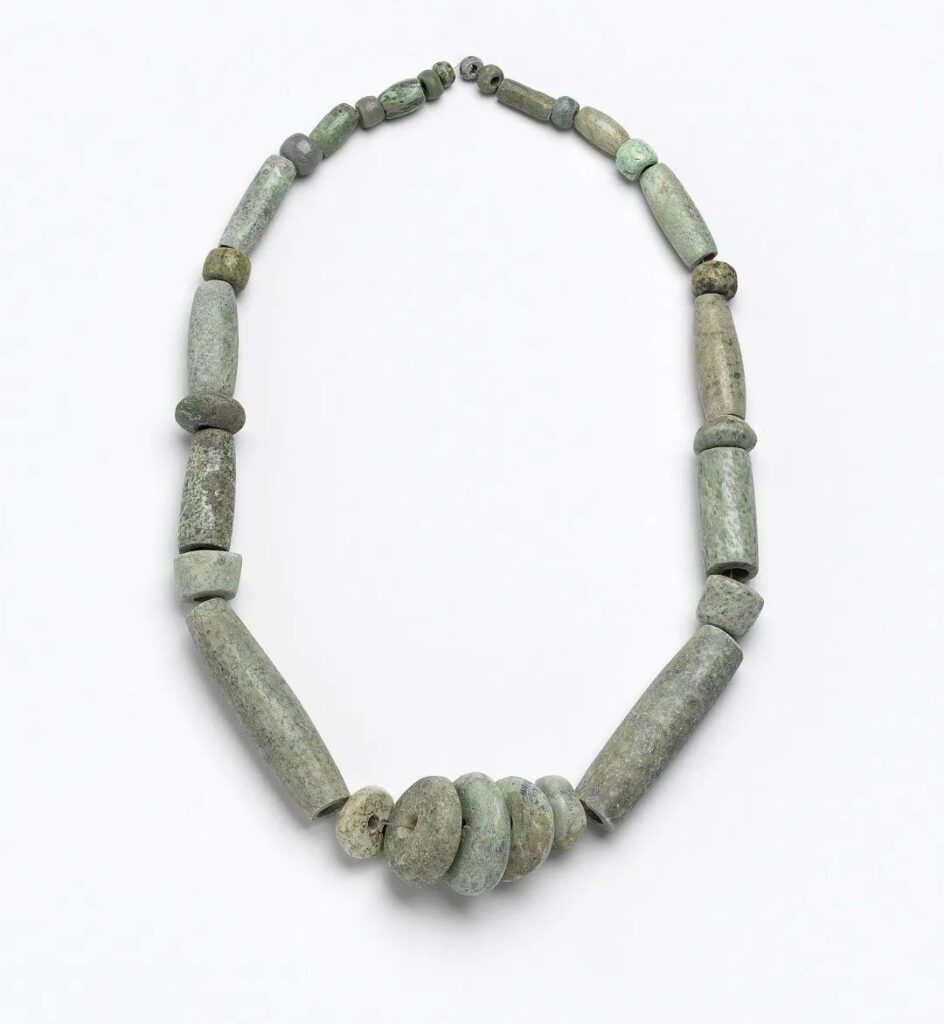
If you’ve seen enough traditional material necklaces, let’s look at something different! NGV houses many jewelry pieces you could hardly imagine. The following necklaces are prime examples – you certainly wouldn’t guess the fascinating secrets behind them just by looking at their surface.
Can coal be made into a necklace?
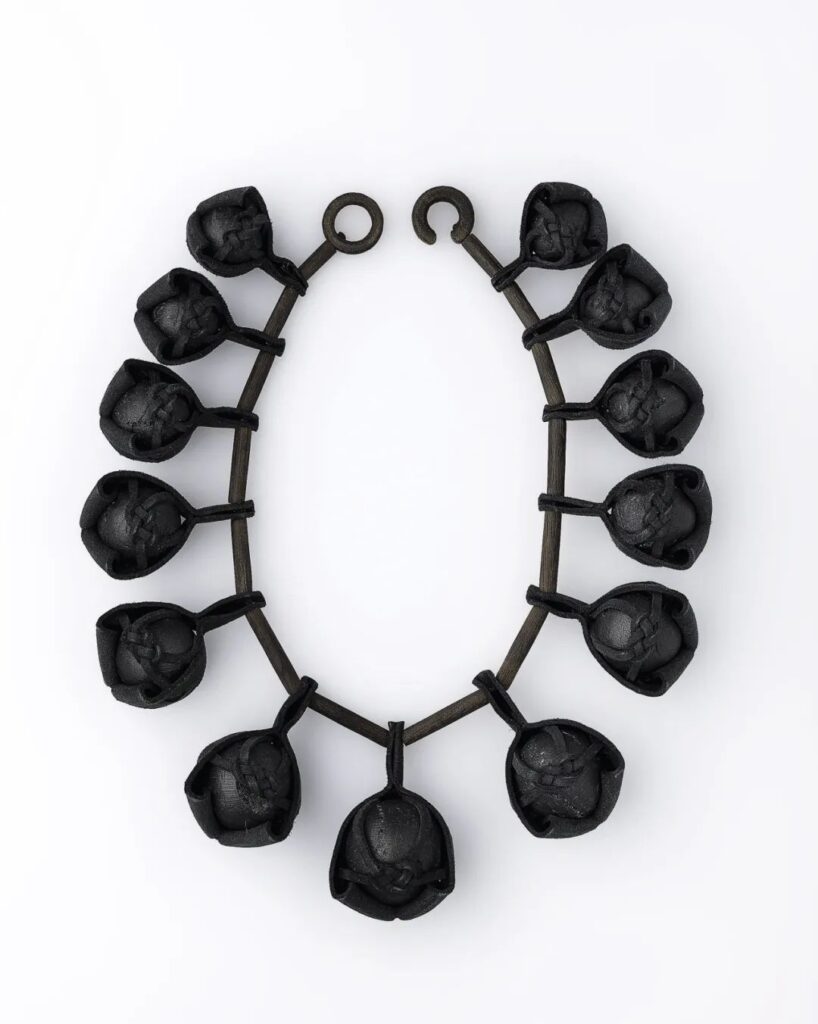
Coal Musubi Neckpiece
From The Musubi Neckpiece series 2019
Materials: Coal, vegetable-tanned kangaroo leather, eucalyptus twigs, waxed linen thread
Designer Kyoko Hashimoto hopes her contemporary works can convey more “value”. Instead of using so-called precious gemstones, she uses extremely simple but carefully selected “materials” to meticulously “tell” richer and more meaningful cultural information.
You would never guess what those black round balls in the Coal Musubi necklace are. They are coal retrieved from Sydney’s basin, finely polished on a lathe into perfect black coal balls, then “embraced” by a small piece of kangaroo leather representing Australia, and “sealed” with the ancient Japanese Shinto Musubi knot.
As a designer born in Japan in 1980 and moved to Australia in 1991, it’s not hard to understand her special reasons for “material selection”. Solemnly wrapping the coal balls expresses respect for this material that people usually consider cheap and dirty, as it supports the origins of ancient civilizations. Kyoko Hashimoto’s use of the ancient Japanese Musubi knot also has a philosophical interpretation, representing the mysterious connections between people.
How to traverse “ancient and modern” with artwork
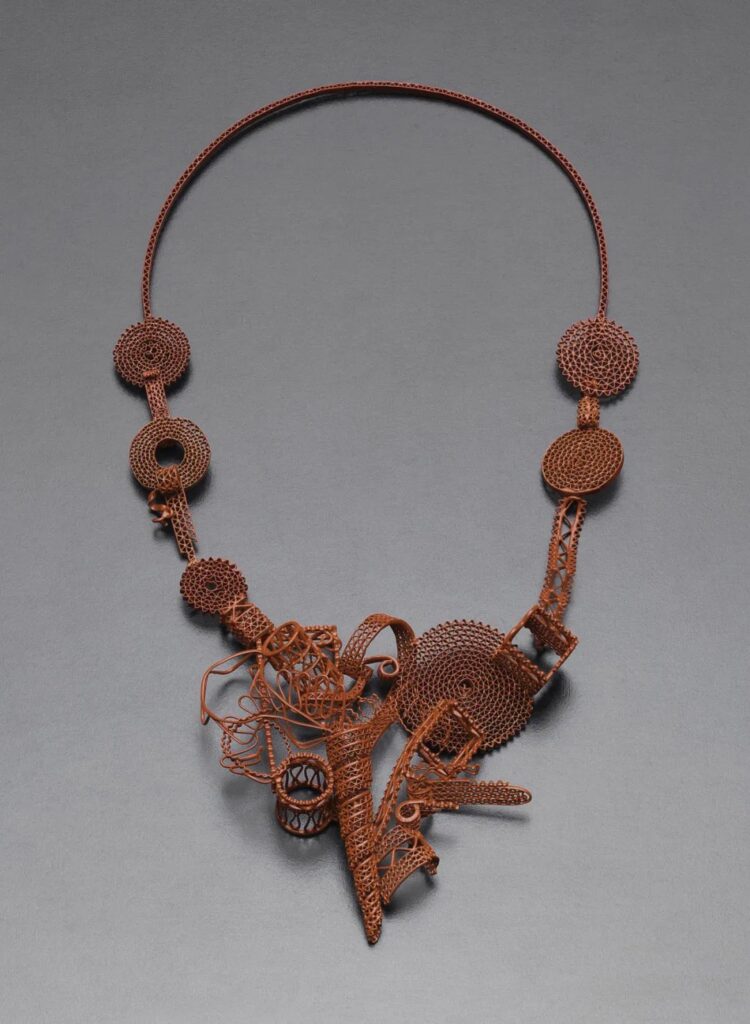
Redline No.2 Neckpiece
Material: Silver with powder coating
At first glance, you might think this necklace is a modern-style piece, but upon closer inspection of its details, doesn’t it seem to belong to an ancient style? In fact, the designer Robert Baines is a “Living Treasure” who has traversed from “ancient” to “modern”. In 2010, he was named a Living Treasure-Master of Australian Craft.
You’d never guess he’s already in his 70s, as his works are so modern and so “red” – Robert Baines often uses red to convey many symbolic meanings.
The Redline No.2 necklace is a classic work by Robert Baines. From a distance, you can vaguely see the goldsmithing of the Bronze Age and the granulation techniques of the Etruscan period. This is his signature style – he excels at creating vintage styles using modern techniques and forms, as if repackaging the crafts and designs of ancient Greece and Rome.
Many of his works are infused with new aesthetic tastes and possess the grandeur and irony of contemporary practice.
A necklace “strung” with animal teeth
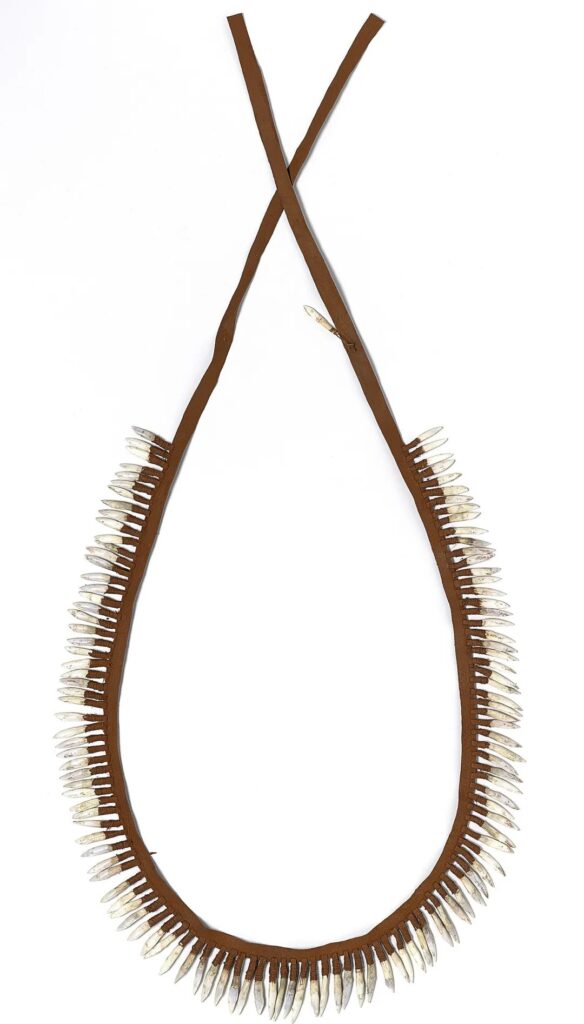
Thung-ung Coorang 2013
Materials: Kangaroo teeth, leather, sinew, earth pigments
Isn’t this necklace’s style striking? Indeed, such necklaces have been body decorations for indigenous people throughout history. Designer Maree Clarke grew up in Mildura, on the banks of the Murray River in northwestern Australia. She has long been researching and reviving traditional indigenous cultures and customs that have been lost for over a hundred years.
Can you guess what animal’s teeth are on this necklace? That’s right, Maree Clarke is from Australia, so it’s not hard to guess that the “inlaid” teeth are kangaroo teeth – 89 of them in total. Making such a seemingly “simple” necklace is no easier than creating jewelry with precious metals and gemstones. These teeth weren’t cruelly extracted from live kangaroos. First, Maree Clarke collected kangaroo carcasses that died accidentally by the roadside.
For a connected design, only two front teeth were selected from each kangaroo. They were soaked in water for three weeks. During this time, she mixed ochre and acacia tree resin to create a natural pigment to color the leather used for “stringing” the necklace. Finally, she used sinew thread to tie each kangaroo tooth one by one before stringing them together.
The “ghost net” trapping marine life

My Home Reef 2017
Materials: Rubber, “ghost net”, nail polish, plastic zip ties
Ellarose Savage calls this necklace My Home Reef because “I used to go diving with my father every day, and it felt great to glide through the coral reefs. In my artwork, coral reefs have always been part of my inspiration.”
Ellarose Savage is an indigenous artist from Erub Island in the Torres Strait. Another signature material that frequently appears in her work is the Ghost Net – abandoned fishing nets that wash up repeatedly on Australia’s northernmost coastline, trapping and killing many marine animals like sea turtles. Ellarose Savage yearns to raise awareness through her artistic approach, adorning her works with jewel-like iridescence.
In this My Home Reef necklace, the “ghost net” forms swollen stamens, interspersed with plastic zip ties commonly used in modern society. Vibrant nail polish also becomes Ellarose Savage’s “paintbrush”, rendering the entire necklace even more brilliant.
A necklace that might “scare” people
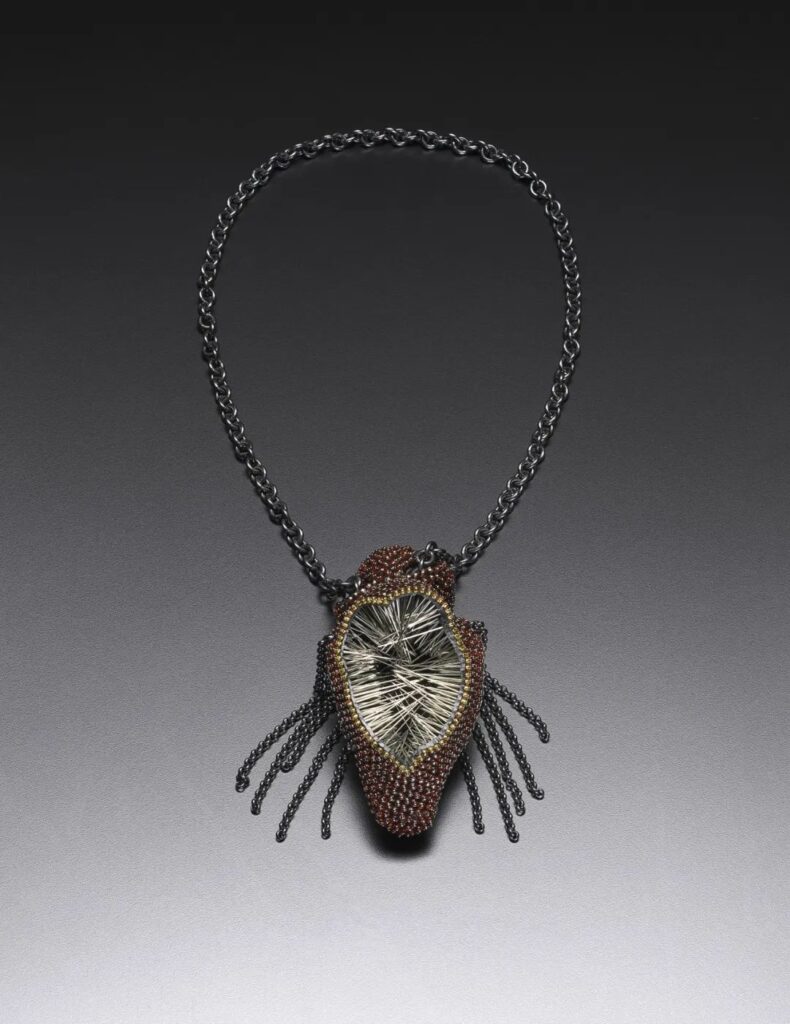
Phoenix 2009
Materials: Glass beads, steel needles, oxidized silver, plastic
Designer Sari Liimatta’s works mostly revolve around animal themes, but many others are realistic rather than fictional animals. However, this piece still showcases her most commonly used materials, such as glass beads and small steel needles.
Hailing from Finland, Sari Liimatta has always been keen on studying the influence of animals in ancient cultures and how they have transformed in modern human life.
She attempts to showcase the primal power of animals in jewelry while using contemporary mechanical constructions to conform to the structural mechanics suitable for modern wear.
Sari Liimatta’s works are far from “calm”. Glass and plastic are fixed to the “phoenix” with small steel needles, with needle tips radiating from all directions towards the center, creating a strange, primitive, and silent shocking effect. Of course, as she says herself, “Some people are afraid of my artworks or even hate them, while others find them interesting and attractive.”
Dialogue with NGV
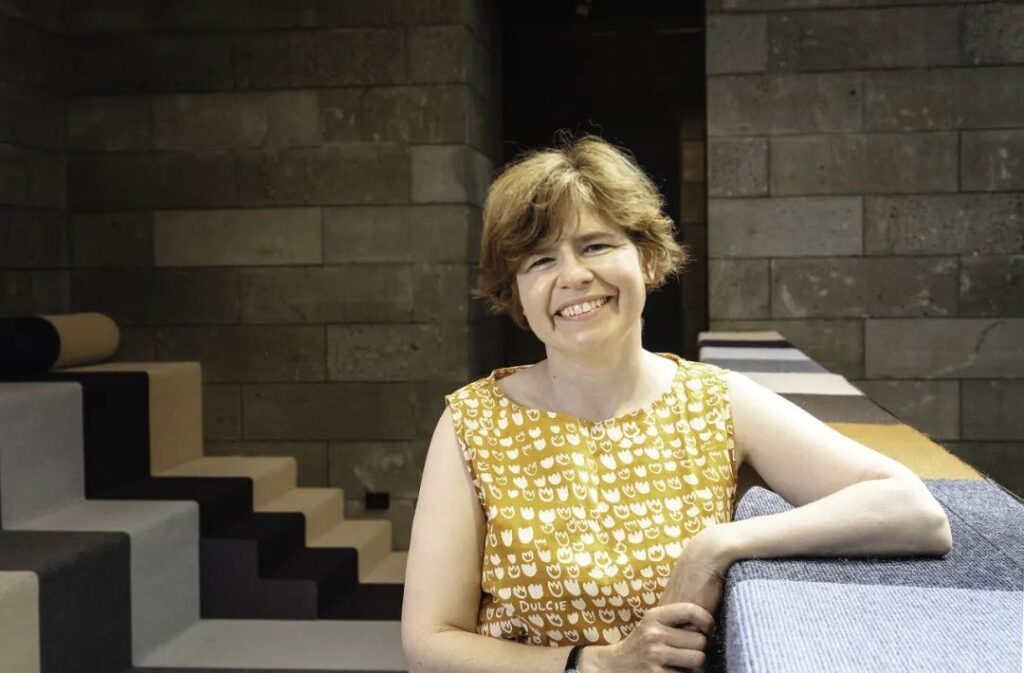
Media and Public Affairs Officer
What is the time span of NGV’s collection?
“NGV was established in 1861, and the jewelry collection here spans from ancient Greek jewelry of the 6th century BC to contemporary style works of today, which is very extensive and rich.”
What are NGV’s criteria for collecting jewelry and accessories? How is the exhibition layout considered and arranged?
“When acquiring a piece of jewelry, we consider many factors, including whether it can strongly complement the existing collection, the quality and craftsmanship of the work, the history and background of the manufacturer or designer, whether they are established or emerging, as well as the broader context of the work and the story it can contribute, or whether it can create an organic dialogue with other works in the museum’s collection.”
Has NGV held any exhibitions specifically for jewelry and accessories?
“NGV has held many exhibitions dedicated to individual artists and manufacturers in recent years, as well as many highly regarded thematic exhibitions, including Black Intentions: Susan Cohn presented in 2003, Mari Funaki: Objects exhibited in 2010, and Italian Jewels: Bulgari Style shown in 2016.”
How about it? After seeing these fresh pieces, are you eager to explore more “magical” jewelry at NGV? The editor has specially prepared an NGV check-in guide for you. Don’t forget to share it with your friends!
Unexpected Necklace Materials: A Journey Through Melbourne’s National Gallery of Victoria (NGV)
Tweet
